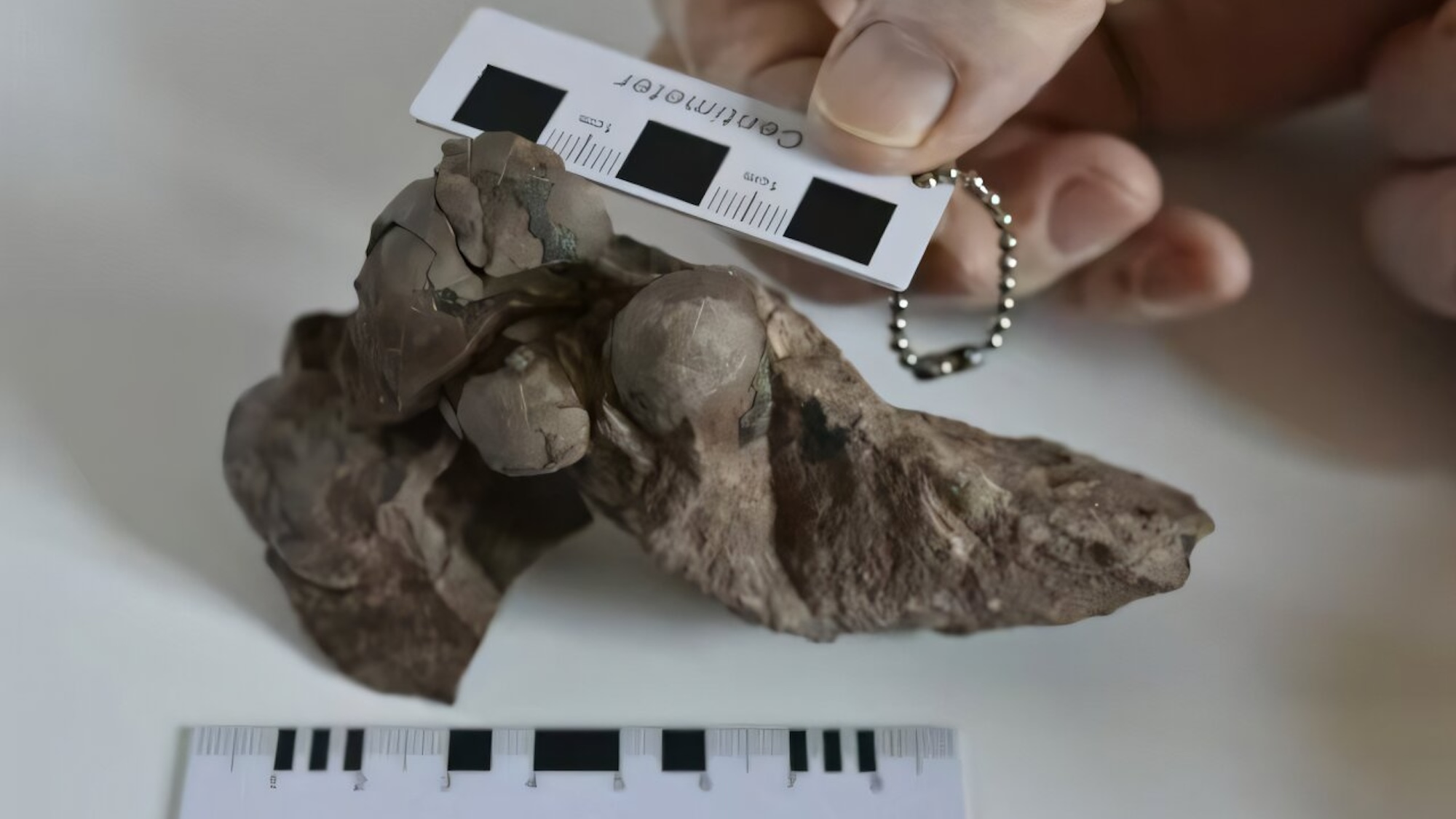

In 2021, researchers uncovered the fossilized remains of six remarkably well preserved dinosaur eggs near a construction site in the Chinese region of Ganzhou. Now, after careful laboratory analysis, a team of paleontologists, evolutionary experts, and geoscientists have confirmed the specimens aren’t just some of the most complete dinosaur eggs ever found—they’re officially the smallest known to scientists.
Detailed in a paper published last month in the journal Historical Biology, the new information is “significant for our understanding of the evolution of theropods in the Late Cretaceous.”
The smallest of the six eggs measures only 29mm long (about 1.14 inches), making it barely half the previous record holder’s length, which is known as the Jingguo Micro Ellipsoid Egg. But examining the historic find went far beyond simply breaking out a ruler—to learn as much as possible about the fossils, the team needed the help of specialized lab equipment.
According to Global Times, researchers led by Fasheng Lou, the chief engineer at the Jiangxi Geological Survey and Exploration Institute and study co-author, utilized both electron microscopy and electron backscatter diffraction tools to examine some of the egg’s smallest details. According to their analysis, the 80-million-year-old fossils’ sizes, shell thickness, pore system, and other attributes were unlike any other known non-avian theropod, leading the team to establish a new genus and species, as well as ootaxon (egg taxonomic classification), Minioolithus ganzhouensis. Importantly, the largely hands-off examinations mean the fossil unit remains in the same condition as when it was first found.
[Related: ‘Deep-snouted’ tyrannosaur fossils uncovered at construction site.]
The researchers say these first few years of analysis have already helped better their understanding of how dinosaurs may have built their nests, and will likely aid in learning more about theropod dinosaur reproductive and evolutionary developments. Moving forward, the group hopes to use micro-CT scanning to reconstruct the overall burial state, which will hopefully assist in eventually identifying what kind of dinosaur laid these types of eggs.
These are far from the first notable finds from Ganzhou’s fossil grounds. The area near the city construction site has long been considered one of the region’s richest paleontological sites. In July, for example, a separate team announced the discovery of southern China’s first “deep-snouted” tyrannosaurid species.